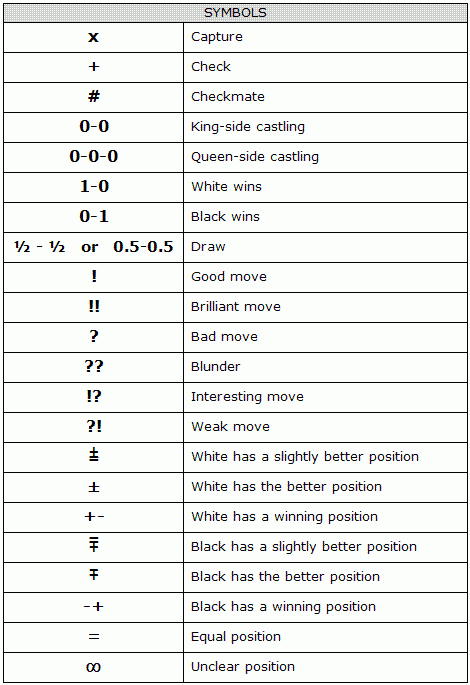Chess Board Notation!
Black's Perspective
-
The squares are named using a coordinate system; every square gets a unique letter and number, in a grid formation
-
From left-to-right from White’s perspective, the squares are ordered alphabetically with letters from “a” through to “h” (opposite for black's perspective)
-
Each square also gets a unique number, from “1” to “8”. The rank closest to the White player in the initial setup are “1” squares, the next rank the “2” squares and so on… to the rank closest to Black, which are “8” squares
-
When writing notation, each piece has its own letter
-
The Bishop is "B"
-
The Knight is "N"
-
The Queen is "Q"
-
The King is "K"
-
The Rook is "R"
-
The Pawn does not have any prefix
-
-
After you put the prefix for the piece that has moved, put the square coordinates of the piece.
-
For example, if a knight moved to e5 from f3, the notation would be "Ne5".
-
If there are two of the same piece that could travel to the same square that you moved one of your pieces to (i.e. 2 knights able to move to the same square), then you would put the row or column that that piece was in to discern it from the other
-
For example, if there was a knight on f3 and a knight on d3 and you moved the knight on f3 to e5, then the notation would be "Nfe5" (showing which knight moved to that square)
-
Another example that uses the rows/numbers to distinct the pieces: if there was a knight on f3 and f7 (of your color) and you moved the f3 knight to e5, then the notation would be "N3e5" (showing that the knight on the 3rd row moved to e5)
-
-
-
If a player captures a piece, it is shown with a "x"
-
For example, if a knight was on f3 and an opponents knight was on e5 and the f3 knight captured e5, the notation would be "Nxe5"
-
Same rules for if two of your pieces can capture a piece on a square
-
For example, if your knight was on f3 , another knight on f7, an opponent's knight on e5, and you want to capture their knight with your f3 knight, then the notation would be "N3xe5"
-
-
Unusual Notation:
-
If the player King-side Castles, the notation is "O-O"
-
If the player Queen-side Castles, the notation is "O-O-O"
Check out the chart on the right for other chess symbols that are frequently used!
Move to ---> Chess Terminology
Back to ---> Beginner Basics

White's Perspective

Written Chess Notation

Example of Chess Notation in a Game

Extra Chess Symbols